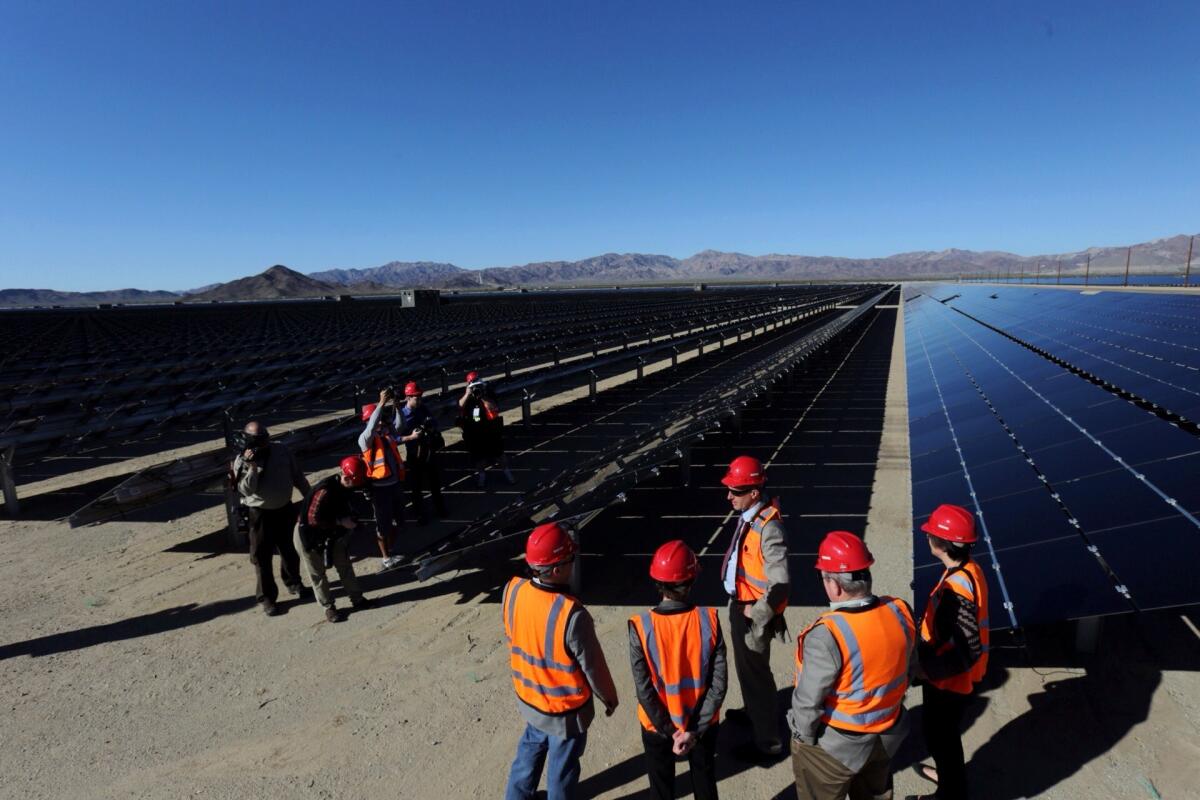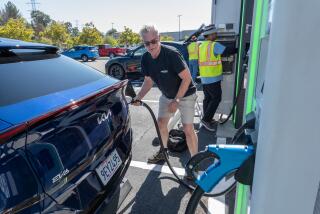Q&A: How can California handle the challenges of renewable energy?

Gov. Jerry Brown and his allies in the Legislature want California to generate half of its electricity from renewable sources by 2030, an increase from the target of one-third by 2020. However, making sure all that clean energy can be used when needed is a big challenge, because the state lacks adequate storage capacity.
What’s the problem?
Renewable energy can be difficult to manage because it is intermittent, and no one can control when the sun shines or the wind blows. Sometimes California ends up generating more energy than needed at any given time, and power plants need to be shut down. And it’s tricky to hold onto electricity until it’s needed.
When there’s too much electricity being generated, why can’t conventional power sources be turned off instead of renewables?
Some power facilities, like nuclear plants, can’t be shut down. Natural gas plants can be scaled back, but they can’t be turned all the way off, according to the operators of California’s electricity grid. And some plants are subject to production contracts that can’t be altered, or they are needed to keep the electrical grid stable.
When solar energy wanes later in the day, demand for electricity increases as residents return home from work, which means grid operators need fast access to fuel like natural gas to ensure there’s enough power available.
Geothermal energy is alone among the renewable energy sources that has “dispatchablity” -- the means to quickly ramp up power delivery during peak hours or scale back when the grid has excess.
How can energy storage help?
If the state can capture excess clean energy, it could be stored and used later, when demand is higher. That would reduce the need to burn natural gas, reducing greenhouse gas emissions.
Reservoirs are a time-tested way to store electricity by pumping water uphill and then releasing it to generate hydroelectric power when needed. However, grid operators are interested in newer technology, like massive batteries, that may be able to react more quickly to fluctuations in electricity generation. The equipment could also have other applications. For example, a factory could install batteries to charge when the price of electricity is low, and then supply power to machinery when the price is high, helping to cut costs.
Another storage technology in use, but not widely, is molten salt. Some solar power plants store heat in large cylinders of salt that efficiently maintain high temperatures. That heat can be tapped to run turbines when solar plants begin to go offline in the later afternoon.
Why isn’t there more energy storage now?
For starters, money. The market for storage is still getting off the ground, and the technology remains expensive. Many of the projects and experiments in California are supported by taxpayer dollars from the state or federal government. There are also questions about whether they can be financially integrated into California’s system for buying and selling electricity on the grid.
“There’s not really a clear market,” said Neil Fromer, executive director at the Resnick Sustainability Institute at Caltech. “How do you build in a financial return so those assets are used as effectively as possible?”
However, the storage industry is expected to expand, and the California Public Utilities Commission is requiring three of the state’s largest utilities to install 1,300 megawatts of energy storage by 2024. Energy officials hope that demand will drive innovation and help overcome engineering hurdles. Challenges include stringing together many battery cells, lengthening the equipment’s life cycle and managing heat levels.
Haresh Kamath, who researches energy storage at the Electric Power Research Institute in Palo Alto, said it could take years to work out the kinks. “Batteries are very complex machines,” he said.
Times staff writer Julie Cart contributed to this report.
Follow @chrismegerian for more updates from Sacramento.
More to Read
Sign up for Essential California
The most important California stories and recommendations in your inbox every morning.
You may occasionally receive promotional content from the Los Angeles Times.






